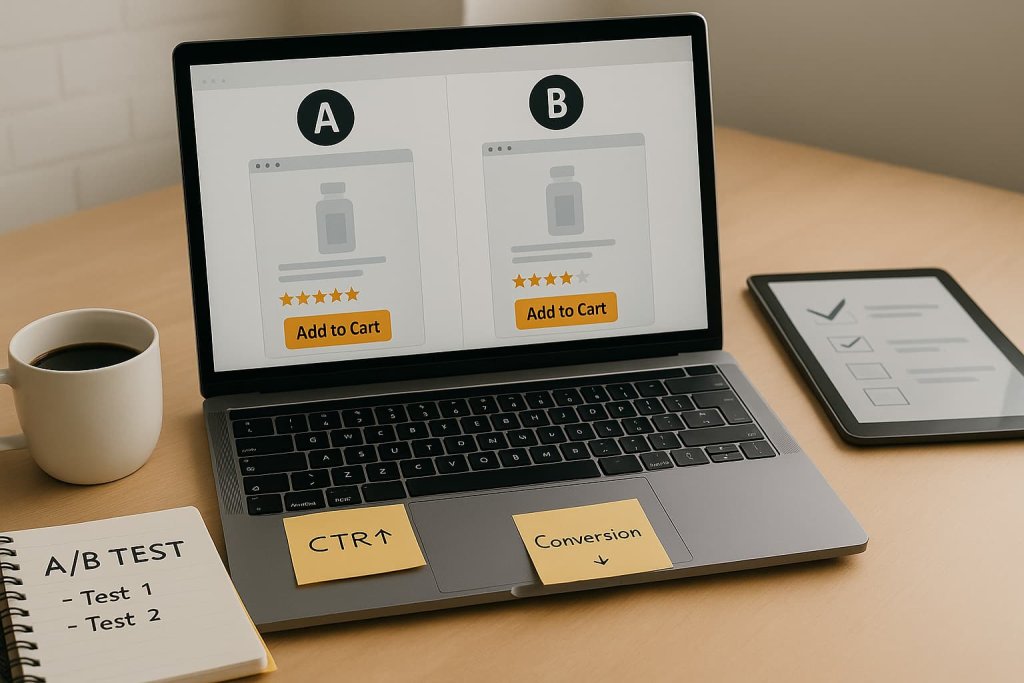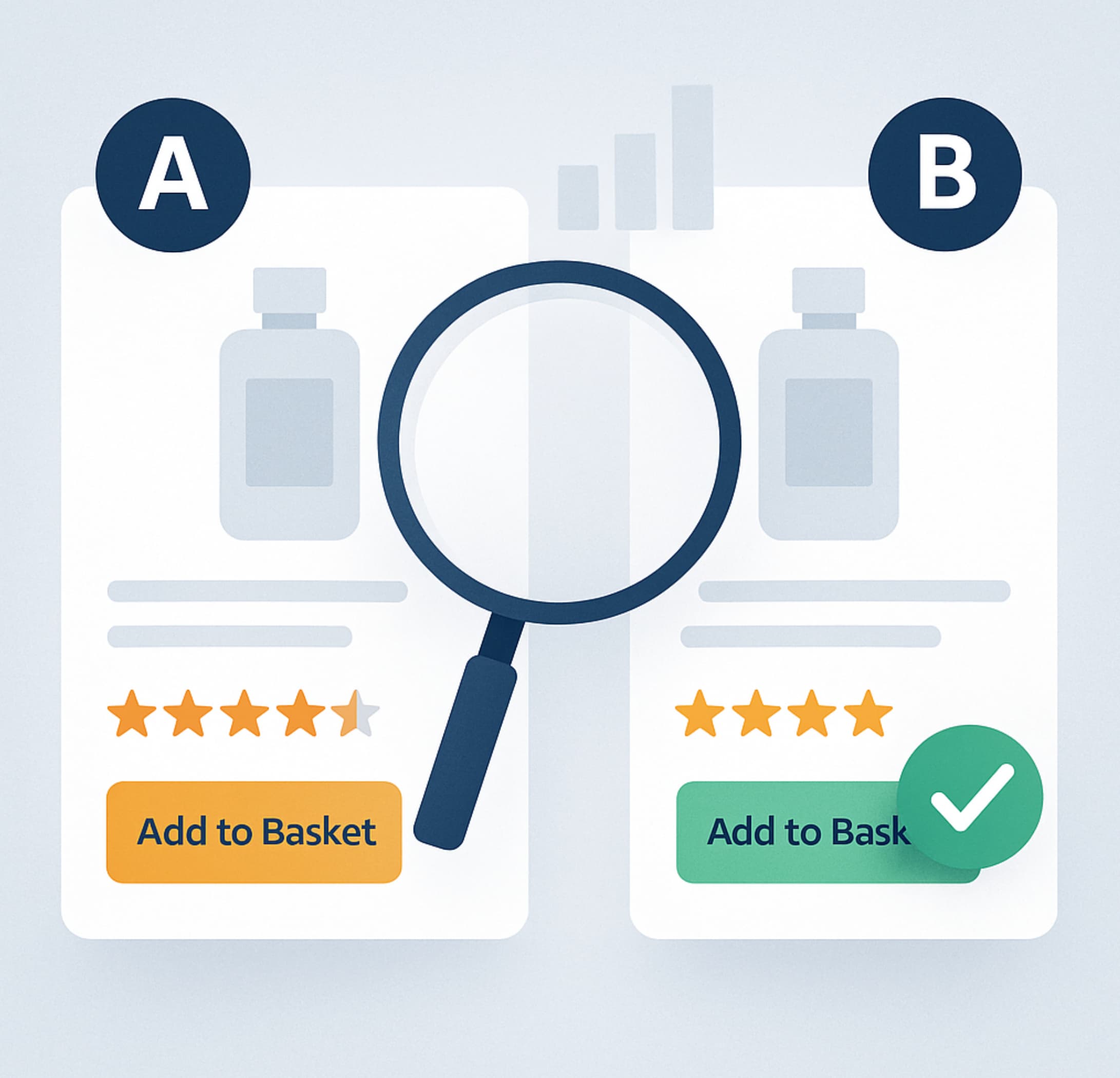How to Use A/B Testing to Improve Your Amazon Listings
15 May 2025Selling on Amazon can feel like navigating stormy waters; a slight change in the market or a competitor’s new tactic can quickly throw your sales off course. But what if minor adjustments – a carefully revised product title, a subtly enhanced image, or a strategic pricing tweak – could transform your listings from average performers into marketplace leaders? That’s precisely what A/B testing enables you to achieve. Rather than relying on intuition or guesswork, you use real customer behaviour data to optimise every detail.
What Exactly is A/B Testing and Why Does it Work?
In essence, A/B testing (also known as split testing) is the scientific approach to refining your Amazon listings. It involves comparing two slightly different versions of your product page, typically called variant A and variant B, to determine which resonates best with your audience. By running controlled, concurrent experiments, you isolate the impact of a single change – ensuring the data you gather is accurate, relevant, and actionable. This methodology removes guesswork, allowing you to base critical listing decisions on hard facts rather than hunches or assumptions.
Identifying the Key Elements for Testing
To harness the full potential of A/B testing, you must first identify the right elements to experiment with. Product titles are prime candidates; a compelling, keyword-rich title can dramatically boost click-through rates from search results. Likewise, images carry enormous weight: an engaging hero image or lifestyle shot might substantially enhance conversion rates. Product descriptions and bullet points also warrant attention, as clear, persuasive copy can make the difference between a hesitant browser and a confident buyer. Finally, pricing adjustments, however slight, can significantly alter sales velocity. Selecting the correct components to test is crucial, as it lays the foundation for meaningful outcomes.
Setting Up Your A/B Tests on Amazon

Once you’ve pinpointed your testing targets, it’s time to implement your experiments. Amazon provides an in-built tool called ‘Manage Your Experiments’, available to brands enrolled in Brand Registry, making the process straightforward. Choose one element to test at a time, ensuring you isolate its specific impact. Typically, tests should run for at least two weeks – enough time to collect robust, statistically significant data, free from the distortions of short-term market fluctuations. Resist the temptation to test multiple elements simultaneously; clarity and accuracy depend on methodical, patient experimentation.
Interpreting Your Test Results Effectively
Accurate interpretation of results is as critical as setting up the test itself. Key metrics to watch closely include conversion rate, click-through rate (CTR), overall unit sales, and session durations. An uptick in CTR suggests your listing is capturing more attention at the search stage, while improvements in conversion rates indicate increased buyer confidence. However, be cautious: not every shift immediately signals success. Look for sustained, consistent improvements rather than fleeting spikes, and always consider external factors – competitor actions, seasonality, promotional events – that could influence outcomes.
Implementing Successful Changes and Continuous Testing
When a variant consistently outperforms the original, implement the winning element promptly to capitalise on its success. But don’t stop there. A/B testing should become part of your ongoing optimisation strategy rather than a one-off tactic. Continuous experimentation allows you to refine your listings progressively, making them resilient against market shifts and consistently competitive. Small, incremental improvements compound over time, eventually delivering significant, lasting results that your competitors will find challenging to match.
Common Mistakes and How to Avoid Them
While A/B testing is powerful, common pitfalls can undermine its effectiveness. Testing multiple elements simultaneously creates ambiguity, making it difficult to determine precisely which change influenced results. Equally problematic is prematurely concluding a test; patience is vital, as insufficient data can lead to misguided conclusions. Additionally, overlooking broader marketplace contexts, such as seasonal demand or competitor strategies, can skew your findings. Being methodical and patient ensures accurate, actionable insights and sustainable improvements.
A Proven Pathway to Better Listings and More Sales
Ultimately, A/B testing is more than merely tweaking product pages. It’s about embracing a culture of curiosity, informed experimentation, and data-driven decision-making. Each carefully measured adjustment builds towards listings that perform better, rank higher, and sell more consistently. Over time, the benefits compound, reinforcing your marketplace position and delivering sustainable competitive advantage.
If managing the intricate details of testing and optimisation feels overwhelming, professional support is readily available. Ascend’s Amazon account management specialists have mastered the art of effective A/B testing and optimisation, helping brands like yours maximise their marketplace performance. Book your complimentary session today, and discover how we can elevate your Amazon listings – and your sales – to new heights.
